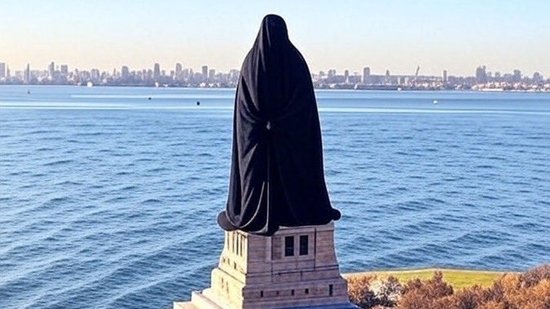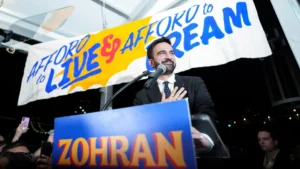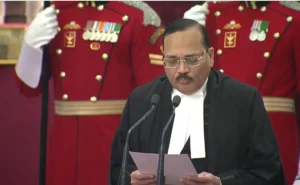Statue of Liberty: When Zohran Mamdani claimed victory in his recent political campaign, supporters celebrated across New York. However, the story reveals how some MAGA supporters responded with disturbing imagery. These posts featured America’s most iconic symbol wearing religious garments, sparking widespread debate about tolerance and respect.
Statue of Liberty: Understanding the Backlash Against Progressive Politics
The controversial posts began appearing hours after Mamdani’s electoral success became official. MAGA supporters shared AI-generated images showing Lady Liberty draped in traditional Islamic dress. These posts aimed to express their anger about progressive candidates gaining power in American politics.
Furthermore, the timing wasn’t coincidental at all during this heated political moment. Conservative groups often use provocative imagery when progressive politicians achieve major electoral victories. The posts quickly gained traction among Trump supporters who felt threatened by Mamdani’s policy positions.
Social Media Platforms Face Content Moderation Challenges
Major platforms struggled to address these controversial posts while balancing free speech concerns. Twitter, Facebook, and Instagram faced difficult decisions about removing content that many users found deeply offensive. The images violated community guidelines regarding respectful religious representation.
However, determining appropriate responses proved complex for social media companies across the nation. Content moderators reviewed thousands of similar posts while weighing constitutional protections against harmful speech. Platform executives ultimately decided to remove the most egregious examples while allowing political commentary to remain.
Statue of Liberty: Religious Communities Respond to Offensive Imagery
Islamic organisations condemned the posts as clear examples of religious intolerance and cultural insensitivity. Community leaders spoke about the harmful impact these images could have on interfaith relations. The posts reinforced negative stereotypes about Muslim Americans and their place in society.
Additionally, other faith communities joined the condemnation of these divisive social media campaigns. Religious leaders emphasised that:
- Sacred symbols deserve respect regardless of political disagreements
- Targeting religious groups through imagery promotes dangerous prejudice
- Political discourse should focus on policy rather than cultural attacks
Zohran Mamdani’s Background and Political Platform
Mamdani represents a new generation of progressive politicians challenging traditional power structures across America. His campaign focused on economic justice, healthcare reform, and immigrant rights throughout his district. The candidate’s Muslim background became a focal point for both supporters and critics.
Moreover, his policy positions align with progressive values that often clash with conservative ideologies. Mamdani supports Medicare for All, Green New Deal initiatives, and criminal justice reform. These stances naturally attract opposition from right-wing political groups seeking to maintain existing systems.
Statue of Liberty: Historical Context of Anti-Muslim Sentiment in Politics
Anti-Muslim imagery in political discourse isn’t a new phenomenon in American electoral processes and campaigns. Conservative groups have repeatedly used religious symbols to attack progressive candidates from diverse backgrounds. The strategy attempts to portray multiculturalism as threatening to traditional American values.
Furthermore, these tactics often increase during election cycles when emotions run particularly high among voters. Political strategists understand that fear-based messaging can mobilise certain voter groups more effectively than policy discussions. The Statue of Liberty imagery represents this broader pattern of weaponising cultural anxieties.
Impact on Democratic Discourse and Civic Engagement
These controversial posts highlight growing concerns about the quality of political debate in modern America. When religious imagery becomes weaponised for political purposes, it undermines constructive dialogue between opposing groups. Citizens deserve better than inflammatory content designed solely to provoke outrage and division.
Nevertheless, many Americans continue working toward more respectful political engagement despite these concerning trends. Community organisations promote interfaith dialogue and cross-cultural understanding through educational programs. These efforts help counter the negative effects of divisive political messaging.
Statue of Liberty: Lessons for Political Communication
The incident offers important lessons about responsible political communication in our increasingly diverse democracy. Political opponents can disagree on policy matters without resorting to offensive religious imagery or cultural attacks. Effective democracy requires mutual respect even during intense political competitions.
Additionally, social media companies must develop better strategies for handling religiously offensive content during election seasons. Clear guidelines and consistent enforcement help protect vulnerable communities while preserving legitimate political speech. The balance remains challenging but essential for healthy democratic discourse.
Conclusion: Protecting Democratic Values Through Respectful Debate
Political victories should be celebrated or criticised based on policy merits rather than cultural fears. When candidates like Zohran Mamdani win elections, opponents have every right to disagree with their positions. However, targeting their religious or ethnic backgrounds crosses important lines that protect democratic participation.
Moving ahead, Americans must choose between divisive rhetoric and constructive political engagement that honours our shared values. The Statue of Liberty represents freedom and opportunity for all Americans, regardless of their religious beliefs or cultural backgrounds.








Be First to Comment